By Laura Gibbs, Humane Pennsylvania Client Care Representative
June 5th – 11th is National Pet Appreciation Week! To celebrate this awesome holiday, our Client Care Representative, Laura Gibbs, decided to share her adoption story!
 “My best friend arrived at the Humane League of Lancaster in April 2017. He was a smelly, filthy, hot mess of a cat with a laundry list of medical issues and a heartbreaking past.
“My best friend arrived at the Humane League of Lancaster in April 2017. He was a smelly, filthy, hot mess of a cat with a laundry list of medical issues and a heartbreaking past.
Henry, as I named him, was one of six cats who had been living in a condemned home. The house was uninhabitable, and Henry and his siblings had been stuffed into a dog crate where they shared a single litter box that was never scooped. Of the six cats, three (including Henry) were blind, three (including Henry) were bald, and all had urinary issues.
The smell that came from these cats was enough to turn even the strongest stomach. Nevertheless, I immediately fell deeply in love with this goofy boy. Henry would greet me with a loud meow and his signature purr — which is the strangest, loudest sounding purr you’ve ever heard. Despite his terrible past, he is truly the happiest, most affectionate cat I’ve ever met.
Though I had my eye on him from the get-go, I couldn’t bring him home right away. I was in the middle of house hunting and moving, so I had to wait — and hope that by the time we found a place he would still be available.
It wasn’t until July that the stars finally aligned, and I made it official: Henry was mine! He fit in so easily with the rest of my crew, it was like he had been with us forever.
easily with the rest of my crew, it was like he had been with us forever.
Today, Henry is still the most loving kitty I’ve ever met. He readily welcomes new family members and fosters with open paws, and they respond accordingly. Even timid animals gravitate toward Henry and his docile nature. Whenever a person tells me they don’t like cats, I introduce them to Henry — and they always change their mind after they receive a gentle headbonk and purr session. He’s just that good.
It’s been almost five years since I brought Henry home, and we have our routine down pat. He supervises me in the bathroom in the mornings while I get ready for my day, and he’s one of the first to greet me when I get home from work. He keeps me and my husband on a strict schedule for meals and ensures we are in bed at a decent hour.
 During the day, Henry can often be found curled up in his igloo bed, cuddling with his best friend Chester, or chasing around things that make a crinkle noise. Henry’s newest BFF is our foster-to-adopt rabbit. He loves to spend time in her room, and she gets so delighted when he visits her!
During the day, Henry can often be found curled up in his igloo bed, cuddling with his best friend Chester, or chasing around things that make a crinkle noise. Henry’s newest BFF is our foster-to-adopt rabbit. He loves to spend time in her room, and she gets so delighted when he visits her!
So, the moral of the story is this: Don’t judge a kitty by his putrid smell — he may just become your best friend.”
Make one of the amazing animals in our care yours forever! Visit https://humanepa.org/adoption/ today!


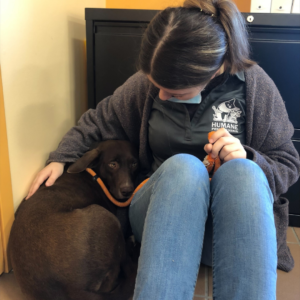 My plan was to spend all my extra time trying to make her comfortable with me and gain her trust. This started with us standing on opposite sides of the kennel — and lots of treats. She slowly became comfortable enough to eat them, but only if I was not looking directly at her.
My plan was to spend all my extra time trying to make her comfortable with me and gain her trust. This started with us standing on opposite sides of the kennel — and lots of treats. She slowly became comfortable enough to eat them, but only if I was not looking directly at her.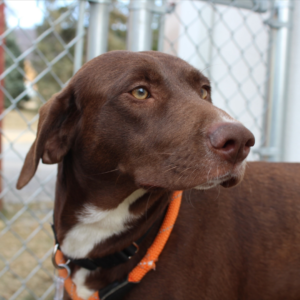 giving Gracie treats and calmly talking to her to coax her out of her shell, and she eventually gave in to their kind attempts.
giving Gracie treats and calmly talking to her to coax her out of her shell, and she eventually gave in to their kind attempts.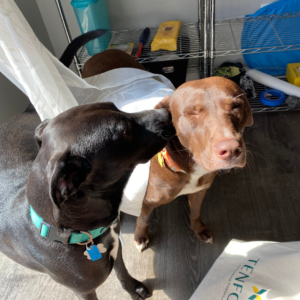 “When we got Gracie, she was incredibly shut down and would run away from us and hide any chance she got. She no longer hides and is often found roaming around, exploring the house while wagging her tail. Even more frequently, she can be found sitting on top of anyone who is willing to give her her favorite neck rubs. She has started giving us face kisses and smiles when she gets to run around outside. She’s such a good dog, and I’m so glad that you all believed in her and in us.” – Bryan and Alicia (Gracie’s adopters)
“When we got Gracie, she was incredibly shut down and would run away from us and hide any chance she got. She no longer hides and is often found roaming around, exploring the house while wagging her tail. Even more frequently, she can be found sitting on top of anyone who is willing to give her her favorite neck rubs. She has started giving us face kisses and smiles when she gets to run around outside. She’s such a good dog, and I’m so glad that you all believed in her and in us.” – Bryan and Alicia (Gracie’s adopters) owners happen because the pets are microchipped and registered with up-to-date contact information.
owners happen because the pets are microchipped and registered with up-to-date contact information. Each microchip has a unique number, an ID number of sorts, that needs to be registered with the pet owner’s name, address, and phone number. It is important to ensure a chip is registered and information is kept up to date.
Each microchip has a unique number, an ID number of sorts, that needs to be registered with the pet owner’s name, address, and phone number. It is important to ensure a chip is registered and information is kept up to date.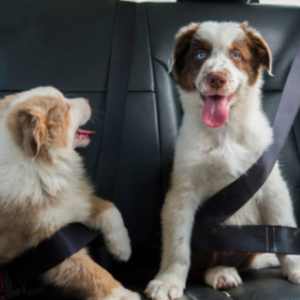 In our area of Pennsylvania, we don’t have to worry too much about natural disasters like hurricanes and tornadoes. However, severe weather here can easily lead to flooding. And no matter where you live, you can be affected by a local water main break or power outages due to high winds and ice storms.
In our area of Pennsylvania, we don’t have to worry too much about natural disasters like hurricanes and tornadoes. However, severe weather here can easily lead to flooding. And no matter where you live, you can be affected by a local water main break or power outages due to high winds and ice storms. leashes, and/or harnesses, and a favorite toy/scent article. Pack a duplicate bag to keep in the car if you travel often with your pet, and be sure to rotate medications so they stay fresh.
leashes, and/or harnesses, and a favorite toy/scent article. Pack a duplicate bag to keep in the car if you travel often with your pet, and be sure to rotate medications so they stay fresh. Humane Pennsylvania is home to the Berks County Animal Response Team (CART), which works directly with the Pennsylvania State Animal Response Team (PSART) and serves as the primary Eastern Pennsylvania large-scale emergency distribution resource for pet food and supplies. We are gearing up to deploy emergency supplies for up to 1,500 animals.
Humane Pennsylvania is home to the Berks County Animal Response Team (CART), which works directly with the Pennsylvania State Animal Response Team (PSART) and serves as the primary Eastern Pennsylvania large-scale emergency distribution resource for pet food and supplies. We are gearing up to deploy emergency supplies for up to 1,500 animals.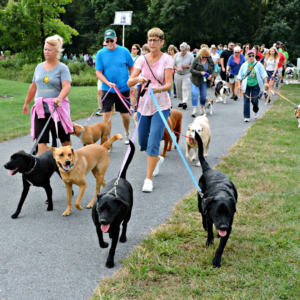 For the last 44 years, Humane Pennsylvania has hosted the
For the last 44 years, Humane Pennsylvania has hosted the  those 10 years, Humane Pennsylvania has also become a leader in animal welfare and has paved the way with innovative approaches and programs, due in part to the funds raised from the Walk.
those 10 years, Humane Pennsylvania has also become a leader in animal welfare and has paved the way with innovative approaches and programs, due in part to the funds raised from the Walk.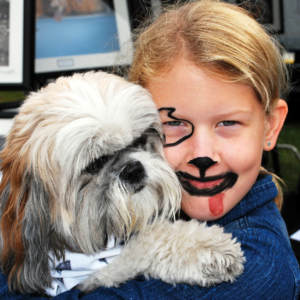 This community-wide, family-friendly event is FREE and open to the public!
This community-wide, family-friendly event is FREE and open to the public! Peaches, a five-year-old spayed female pug, was surrendered to the Freedom Center for Animal Life-Saving last week after a construction worker found her onsite, wrapped in a blanket outside with small bowls of food and water. The worker brought Peaches to the Freedom Center in Berks County, where she was immediately taken in and cared for – the shelter staff made sure to check for a microchip right away as part of the surrender protocol.
Peaches, a five-year-old spayed female pug, was surrendered to the Freedom Center for Animal Life-Saving last week after a construction worker found her onsite, wrapped in a blanket outside with small bowls of food and water. The worker brought Peaches to the Freedom Center in Berks County, where she was immediately taken in and cared for – the shelter staff made sure to check for a microchip right away as part of the surrender protocol. challenges with her current living arrangements, she made peace knowing that Peaches was doing well and was in safe hands at the Freedom Center. Although Peaches and her owner didn’t head back home together, the closure made possible because of that microchip is why it’s so important. Think of that scene in Cast Away when the wife realizes the husband she thought she lost forever had survived the plane crash and was, in fact, alive. While life’s circumstances couldn’t allow them to be together, both found peace in knowing that the love they shared was real and they no longer had to wonder.
challenges with her current living arrangements, she made peace knowing that Peaches was doing well and was in safe hands at the Freedom Center. Although Peaches and her owner didn’t head back home together, the closure made possible because of that microchip is why it’s so important. Think of that scene in Cast Away when the wife realizes the husband she thought she lost forever had survived the plane crash and was, in fact, alive. While life’s circumstances couldn’t allow them to be together, both found peace in knowing that the love they shared was real and they no longer had to wonder. Is adopting a shelter pet the way to go? Does adopting an animal really make that much of a difference? For some, the answer is simple and automatic. For others, it’s not.
Is adopting a shelter pet the way to go? Does adopting an animal really make that much of a difference? For some, the answer is simple and automatic. For others, it’s not. no longer has to spend their time in a small cage or kennel — but there’s an emotional aspect for you as the adopter, too. You will always be the one who changed that animal’s life and gave them their forever home. It creates a bond that you will always feel.
no longer has to spend their time in a small cage or kennel — but there’s an emotional aspect for you as the adopter, too. You will always be the one who changed that animal’s life and gave them their forever home. It creates a bond that you will always feel.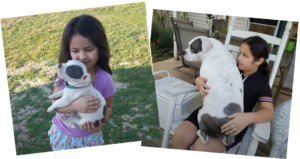 Athena found me in January 2016, when I was searching for the perfect pup to call my own. I had grown up with lots of animals and, as I was living alone across the country, I felt it would be the perfect time to find a companion to share my life with. A family friend mentioned they had a puppy that they loved but could no longer care for. I immediately went to meet Athena, and I fell in love with her instantly.
Athena found me in January 2016, when I was searching for the perfect pup to call my own. I had grown up with lots of animals and, as I was living alone across the country, I felt it would be the perfect time to find a companion to share my life with. A family friend mentioned they had a puppy that they loved but could no longer care for. I immediately went to meet Athena, and I fell in love with her instantly.




 When a mosquito has a blood meal from a dog that has adult heartworms, the microfilaria is taken in by the mosquito and undergoes transformation to a larval stage, which can now be a source of infection for another dog. This larval stage parasite is injected from the mosquito to another dog with the next blood meal the mosquito takes.
When a mosquito has a blood meal from a dog that has adult heartworms, the microfilaria is taken in by the mosquito and undergoes transformation to a larval stage, which can now be a source of infection for another dog. This larval stage parasite is injected from the mosquito to another dog with the next blood meal the mosquito takes. larval stage of the heartworm before it has the chance to mature into an adult worm and cause excessive damage.
larval stage of the heartworm before it has the chance to mature into an adult worm and cause excessive damage. intentionally, knowingly or recklessly ill-treat, overload, beat, abandon or abuse an animal. Aggravated cruelty, as defined by Sec. 5534 of the Pennsylvania Statute, is committed when torture, neglect or cruelty causes serious bodily injury or the death of an animal.
intentionally, knowingly or recklessly ill-treat, overload, beat, abandon or abuse an animal. Aggravated cruelty, as defined by Sec. 5534 of the Pennsylvania Statute, is committed when torture, neglect or cruelty causes serious bodily injury or the death of an animal. When you make a report through a phone call or online, you’ll need to leave your contact information so the agency can follow up with you, but your identity is kept strictly confidential. Just remember that you could be the only — or last — chance at survival for an animal.
When you make a report through a phone call or online, you’ll need to leave your contact information so the agency can follow up with you, but your identity is kept strictly confidential. Just remember that you could be the only — or last — chance at survival for an animal.